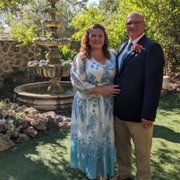Amigo K.
Yelp
( Not to be confused with the current CATHEDRAL of San Carlos Borromeo , 500 Church Street, Monterey, CA 93940 ... the oldest stone building in California )
FOR RELIGIOUS WEDDING INFO:
https://carmelmission.org/wedding/guidelines/
Forgive me, my friends, my point-of-view on these matters is that the indigenous Native populations should have been left alone, by Everyone; Chuch, Soldiers, Militias, Prospectors, et al.
The Vatican's Papal Bulls of the 1400's gave authority to the Catholic kingdoms of europe to conquer, convert, and enslave human beings of the New World who were "heathens".
Spanish explorers looked for Native populations as a source of labor, and usually they lived near a reliable source of water. The Spanish arrival would result in fatal disease epidemics sweeping through the Native villages. This brutal decimation worked in favor of the Spanish forces.
Natives were rounded up to work at the missions. They were baptized into the faith with a new Spanish name ( Usually of the Saint honored the day of their baptism ). All Native ceremonies and beliefs were to be forsaken, and only the Spanish language spoken.
Forced assimilation resulted in a series of revolts at the missions; beginning at San Gabriel in 1771, then San Diego in 1775 where the Kumeyaay tribe actually killed one of the Spanish priests. Revolts happened in the Chumash tribal territory where they held off the Spanish soldiers from regaining the missions for over 4 months. At many missions around San Francisco, the Natives simply sneaked away at night, hundreds at a time.
Toypurina, a "medicine woman" of the Tongva tribe formed yet another revolt against San Gabriel mission. After soldiers crushed the rebellion, Toypurina was "deported" to the mission at Carmel! You may feel her presence here at Carmel.
Spain lost California (and more) to Mexico. The churches and lands were secularized, Indians were without land. Missions fell into disarray.
Mexico's short tenure ended with the U.S. - Mexico war, then California was admitted to the Union in 1850. The first governor of California, Peter Hardeman Burnett publicly stated that a genocidal war will be waged against the Indians. Burnett promised bounty for each Indian scalp brought to government offices. Soon, "militias" of failed gold prospectors hunted down Natives, and whole villages were massacred for their scalps.
A lone survivor of the Yahi tribe massacre, a man named "Ishi", had tired of hiding alone. Ishi, 50 years old in 1911, was taken to anthropologists at Berkeley where he lived the final 5 years of his life as "The Last Wild Indian", a minor celebrity.
Are we not our brother's keeper? A million "Ishi's" perished, after europeans arrived. Construction crews would constantly unearth mass graves around California where the disease epidemics struck. Nowadays, laws require a Native American Monitor be hired for all major construction jobs, in case skeletons are uncovered.
Back to the Carmel Mission. Not hard to find on RIO ROAD, plenty of free parking. You pay $10.00 at the Gift Shop to pass through a door to the actual mission grounds.
Carlo BORROMEO, Archbishop of Milan, Italy granted his name to this Franciscan mission, which was first in Monterey in 1770. Soon, Father Junipero Serra wanted to keep a distance between the abusive Spanish soldiers and the mission's Native American females. Serra chose a new site near the Carmel River where land was more suitable for farming.
New name: Mission San Carlos Borromeo del Río Carmelo (1771)
Carmel is an active parish of the local diocese since 1886. It was the head of the California missions with Father Junipero Serra in charge until his natural death in 1784. Serra was recently canonized as a Saint, which may have increased interest in this particular mission.
In 2008, and 2013, the structures were extensively reinforced against earthquakes, and ADA-approved bathroom installed.
The day of our visit, there were 20 visitors. We all walked around the grounds freely, pausing where we found interest. It was amazing the good condition overall of the buildings and grounds.
Please see my photos for this review. BOTTOM LINE: Go early in day, don't be rushed. AFTER: Drive Rio Road into downtown, it becomes JUNIPERO, keep going. Turn Left at Ocean Blvd, this takes you to SCENIC DRIVE along the coast. SCENIC is ONE-WAY ONLY toward south, through a nice residential area. Enjoy the views, ocean air, and beach access. Food & supplies are back along Junipero & Ocean.
..............{ UPDATED with bits of info! March 6, 2018 }












































